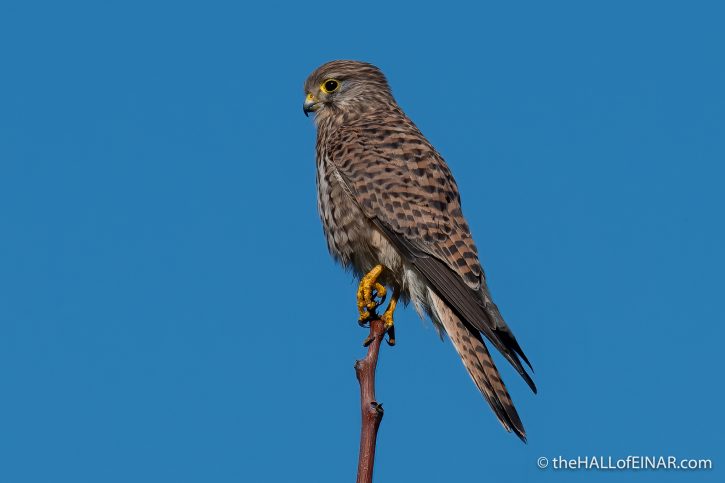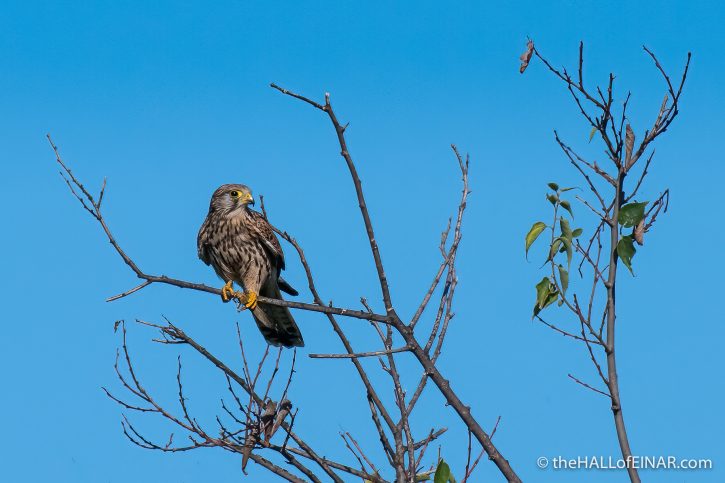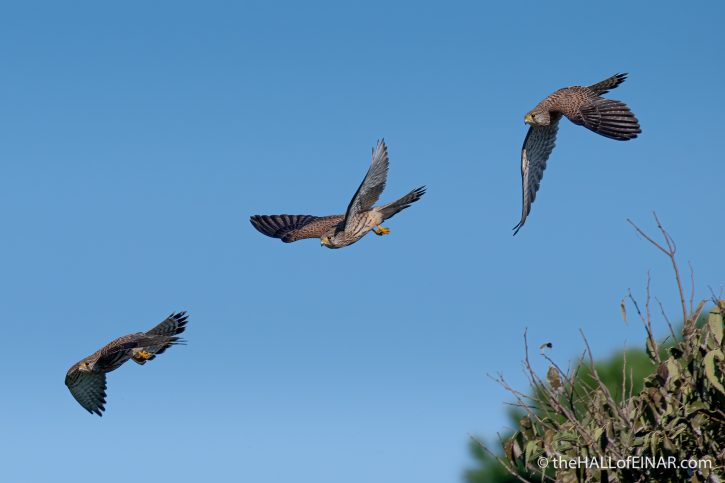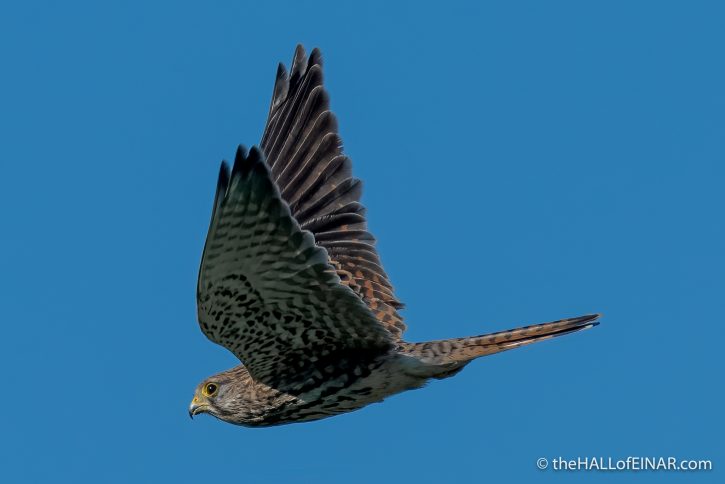Five and a half yards make a perch
The female Kestrel of the pair is perched in front of me. I’ve only got this close by sitting on a tiny stool hidden by a camouflage cloth held around my lens with a rubber band.

There are a range of perches around the Rome wasteland where I’ve spent a couple of days scouting-out photo opportunities. I’ve watched the Kestrel pair as they hunt grasshoppers in the rough scrub and grassland. They regularly return to the same perches to survey their hunting grounds.
The meaning of a perch as a rod or pole on which a bird rests is found as early as the late 13th Century. A perch was originally a measuring rod, pole, stick or stake with the English word coming from the Old French word perche which was a unit with a length of 5.5 yards. The Kestrels here are usually lower than that.
The Old French word perche is from the Latin pertica which was a pole, a long staff or a measuring rod used in Ancient Rome for measuring land. A pertica was ten Roman pedes, or ten feet. I wonder if an Ancient Roman surveyor ever came to this part of Rome with his pertica? Brass measuring rods were found in the ruins of Ancient Roman buildings and Ancient Roman measurements were standard and well documented. I’d love to find a pertica under my pedes. The Ancient Romans didn’t invent the perch, though, they got many of their measuring systems from Ancient Greece and Ancient Greece? Well, they borrowed from the masters, the Ancient Egyptians. And the Ancient Egyptians? Well, civilisation started in modern day Iraq and Kuwait in Mesopotamia. The ‘fertile crescent’ is where enough food was produced for people to have jobs completely unrelated to subsistence agriculture. Wheels, agriculture, writing, maths, astronomy; they all come from Mesopotamia, starting 12,000 years ago, when the UK was still in the last ice age and a barren wasteland.
Traditional English measurements were ‘three feet make a yard, five and a half yards make a perch’, or tres pedes faciunt ulnam, quinque ulne & dimidia faciunt perticam. The perch (or rod as it was often called here) was finally phased out as a legal unit of measure in the UK by metrication beginning on 24 May 1965. It still exists as a ghost as a measure of canoes and allotments.
Here’s another of the Kestrel’s favourite perches:

The pair have a favourite tree, right in the middle of their territory. I position myself and see the female take off and get a sequence of shots I can turn into a composite image:

It’s a marvellous bird.

The oldest fossil falcons are less than ten million years old. Species of Kestrels have been hunting for the last two million years and more. It rather puts human civilisation into perspective, doesn’t it?